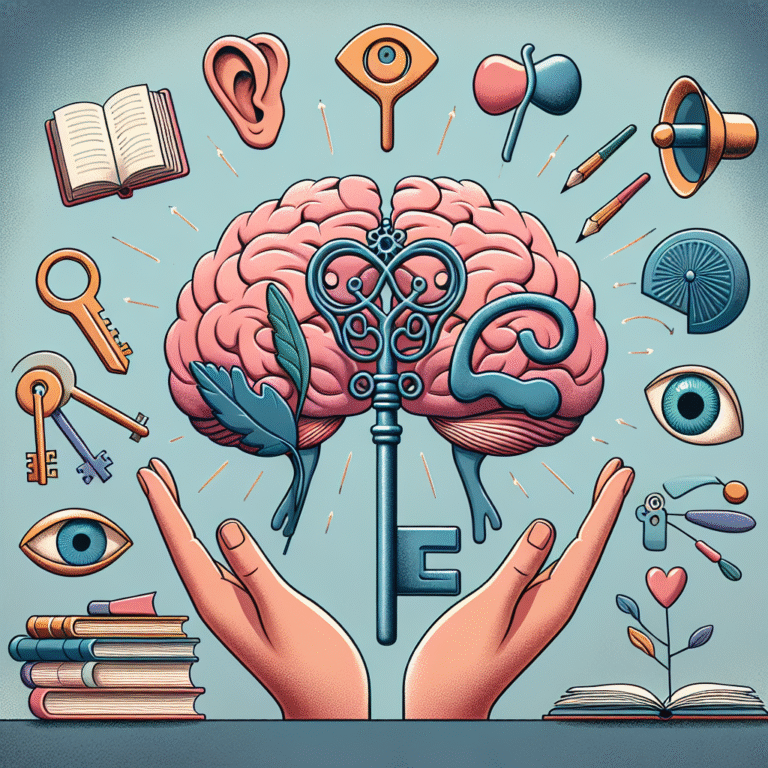The Silent Struggle: Identifying Eating Disorders and Essential Treatment Paths
Introduction
In a world laden with societal pressures, the silent struggle of eating disorders is often overlooked, misunderstood, and hidden beneath layers of stigma. The prevalence of these disorders today is staggering, affecting millions across the globe. Yet, amidst this overwhelming crisis, many remain unaware of the signs and pathways to recovery. This comprehensive exploration titled "The Silent Struggle: Identifying Eating Disorders and Essential Treatment Paths" is designed to shed light on the subtle nuances of these mental health issues, providing readers with insightful information and practical solutions.
Identifying the various types of eating disorders—ranging from anorexia nervosa to binge eating disorder—requires a keen understanding of the psychological and physical symptoms that manifest. Alongside this, it is crucial to highlight the various treatment paths available, offering hope to those grappling with these disorders. Through personal narratives, expert insights, and actionable advice, we aim to foster a deeper understanding of this often-misunderstood condition.
Understanding Eating Disorders
What Are Eating Disorders?
At their core, eating disorders represent a complex interplay of psychological, biological, and sociocultural factors. They can manifest in various ways, often beginning innocently but spiraling into severe health concerns. Here’s a brief overview of the most common types:
- Anorexia Nervosa: Characterized by extreme restriction of food intake, an intense fear of gaining weight, and a distorted body image.
- Bulimia Nervosa: Involves cycles of binge eating followed by purging behaviors, such as vomiting or excessive exercise.
- Binge Eating Disorder: Uncontrolled consumption of excessive quantities of food, often leading to feelings of shame or guilt but without compensatory behaviors.
Signs and Symptoms
Recognizing eating disorders requires an attentive eye. Here are some common symptoms associated with each type:
| Disorder | Signs and Symptoms |
|---|---|
| Anorexia Nervosa | Extremely thin appearance, brittle nails, lanugo (fine hair), fear of gaining weight |
| Bulimia Nervosa | Evidence of binge eating, secretive behavior, dental erosion, swollen glands |
| Binge Eating Disorder | Eating large amounts of food while feeling out of control, eating when not hungry |
Case Study: Emma’s Journey
Emma, a vibrant 22-year-old college student, initially seemed to embody the perfect life—good grades, a social butterfly, and a supportive family. However, over time, she developed an obsession with her appearance and weight. Unbeknownst to those around her, Emma was silently struggling with anorexia nervosa. It wasn’t until a worried friend noticed alarming weight loss and encouraged Emma to seek help that the severity of her condition became clear. This case illustrates the silent struggle many endure and the critical importance of support and awareness.
The Psychological Dimensions of Eating Disorders
The Role of Mental Health
Eating disorders are often rooted in various psychological issues, such as:
- Low self-esteem: Individuals may believe that their worth is tied to their appearance.
- Perfectionism: A relentless desire for flawlessness can lead people to extreme measures.
- Coping Mechanisms: For many, food becomes a means of managing stress, anxiety, or trauma.
Exploring these psychological dimensions is essential for understanding the silent struggle of individuals grappling with these challenges.
Risk Factors
There are several known risk factors that may predispose someone to develop an eating disorder:
- Genetics: Family history can play a significant role in susceptibility.
- Sociocultural Pressures: Societal ideals regarding body image can spur unhealthy behaviors.
- Stressful Life Events: Major life changes, such as the loss of a loved one, can trigger eating disorders.
Case Study: Jake’s Internal Battle
Jake, a 19-year-old high school athlete, found himself trapped in a cycle of bulimia nervosa. A high-pressure environment focused on performance left him feeling inadequate, leading to binge eating followed by purging. Jake’s experience sheds light on how societal expectations can fuel disordered eating, highlighting the need for supportive environments.
The Impact of Eating Disorders
Physical and Emotional Consequences
Eating disorders wreak havoc not just on mental health but physical health as well:
| Consequence | Description |
|---|---|
| Cardiovascular Issues | Irregular heartbeats, heart failure, and other complications |
| Gastrointestinal Problems | Constipation, bloating, and severe damage from purging behaviors |
| Hormonal Imbalances | Irregular menstrual cycles, infertility, and other hormonal issues |
These consequences highlight why it’s vital to address the silent struggle of eating disorders head-on.
Emotional Health
The silent struggle of these disorders often leads to a ripple effect on emotional well-being. Feelings of anxiety, depression, and isolation not only exacerbate the condition but can also hinder recovery efforts. Recognizing how these emotions are intertwined with eating disorders is critical for effective treatment.
Available Treatment Paths
Comprehensive Treatment Approaches
Fortunately, there are numerous treatment paths available for those facing the silent struggle of eating disorders. These may include:
Therapy:
- Cognitive Behavioral Therapy (CBT): Focuses on changing harmful thought patterns related to food and body image.
- Dialectical Behavior Therapy (DBT): Equips patients with skills to manage emotions and interpersonal relationships.
Nutritional Counseling:
- Working with registered dietitians helps individuals rebuild a healthy relationship with food.
- Medical Monitoring:
- Regular check-ups to address physical health complications, involving a multidisciplinary team of healthcare providers.
Case Study: Sarah’s Recovery
Sarah, a 30-year-old recovering from binge eating disorder, underwent a multi-faceted treatment program involving CBT and nutritional counseling. With dedication, she began to dismantle the cycle of shame surrounding her eating habits, highlighting the effectiveness of comprehensive treatment paths.
Support Systems
Implementing robust support systems—comprising family, friends, and support groups—can significantly impact recovery. The silent struggle of eating disorders can feel isolating, making these connections crucial.
Conclusion
The silent struggle of identifying eating disorders and navigating available treatment paths is a journey that many undertake, often without the understanding and support they need. By shedding light on the signs, symptoms, psychological dimensions, and treatment avenues, we can bring greater awareness to this crucial issue. If you or someone you know is battling an eating disorder, know that recovery is possible, and seeking help is the first step toward a healthier, happier life.
Remember, you are not alone in this struggle. The more we can talk openly about eating disorders, the more we can dismantle the stigma surrounding them and pave the way for healing.
FAQs
1. What are the early signs of an eating disorder?
Early signs can include significant weight changes, obsessive thoughts about food, avoiding social situations centered around meals, and changes in mood or behavior regarding eating.
2. How can I support someone with an eating disorder?
Approach them with compassion, listen without judgment, encourage professional help, and educate yourself about their struggle.
3. Is it possible to recover from an eating disorder?
Yes, recovery is entirely possible with the right treatment, support, and perseverance. Many individuals lead fulfilling lives post-recovery.
4. How long does treatment usually take?
The duration of treatment can vary significantly based on individual circumstances, ranging from several months to years. Continuous support and follow-up are often necessary.
5. What are the risks of untreated eating disorders?
Untreated eating disorders can lead to severe physical health complications, emotional distress, and even fatal outcomes, underscoring the importance of timely intervention.
By amplifying understanding of this silent struggle, we can inspire action, encourage treatment, and foster a more supportive environment for all.














